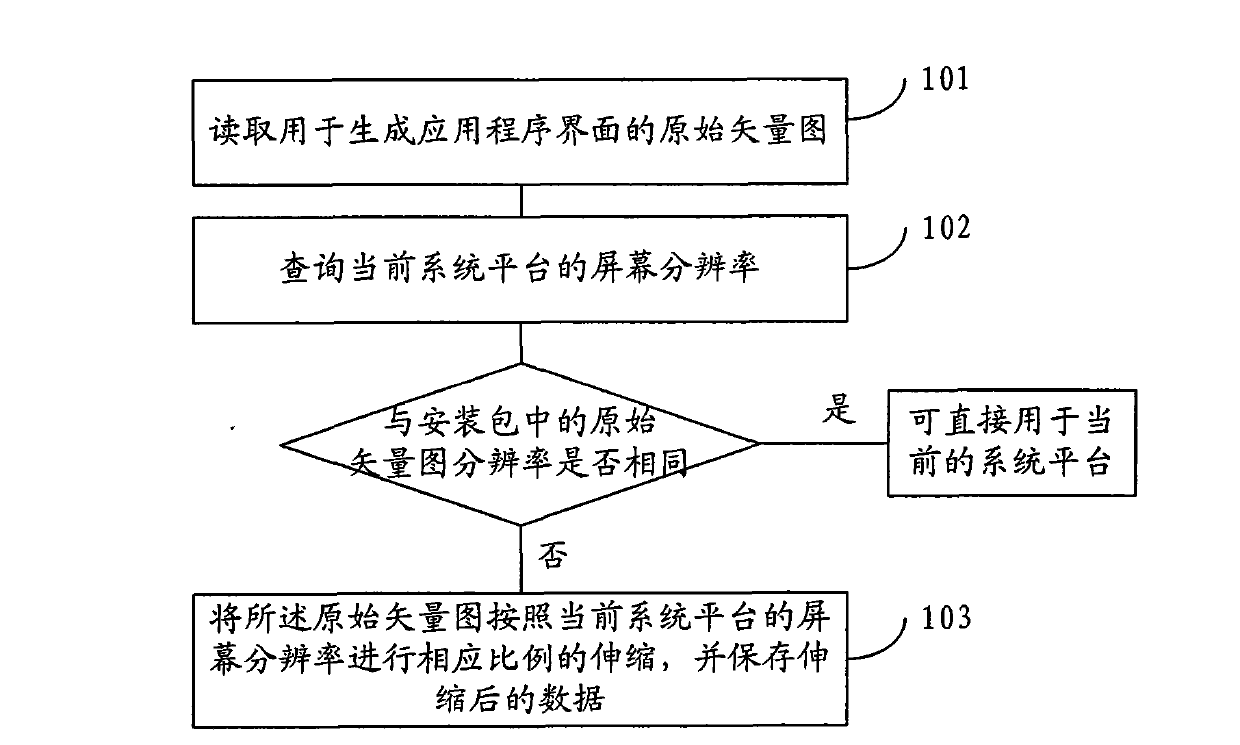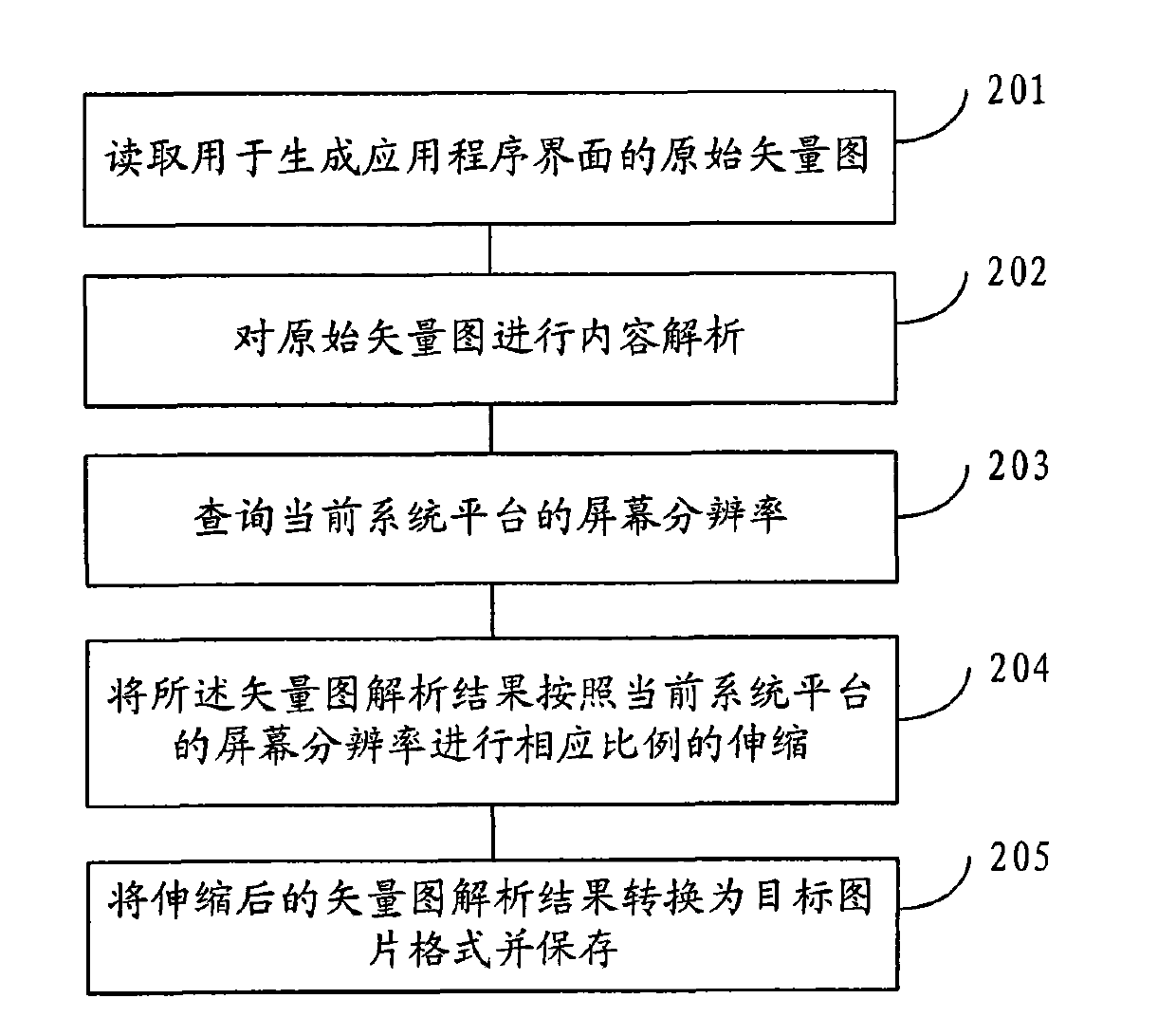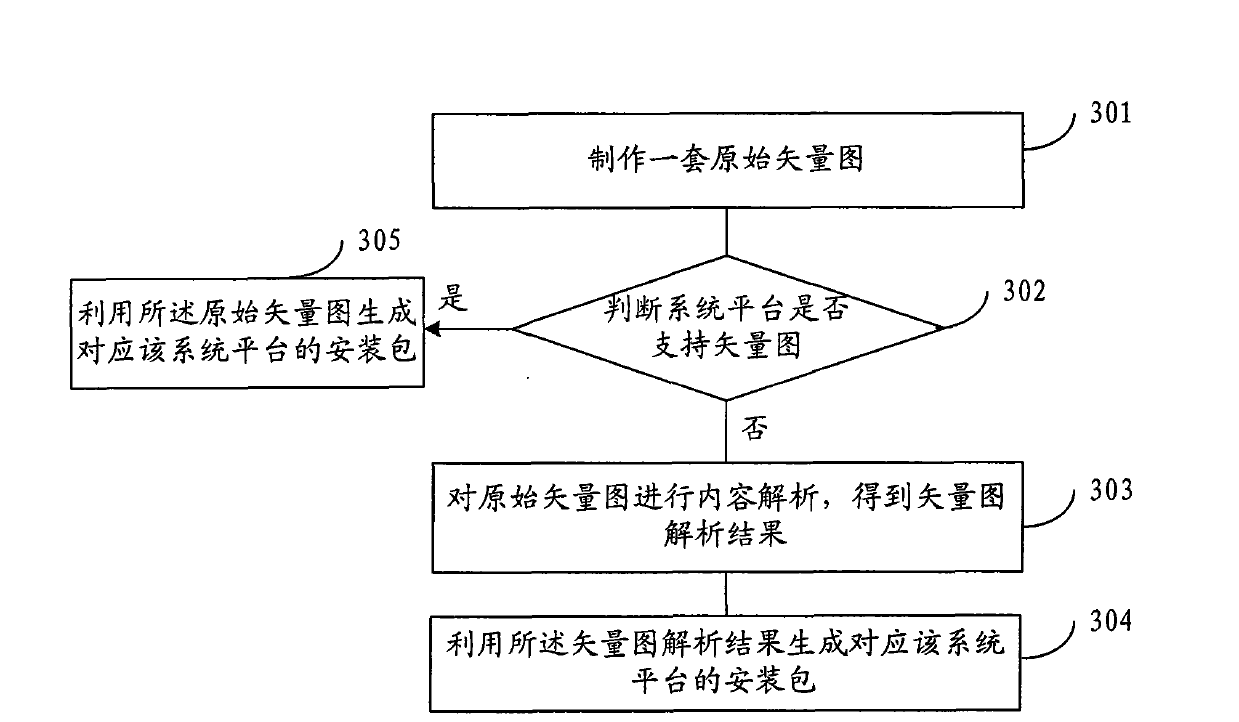Processing method and device for multi-platform multi-resolution application program interface
A technology of application program interface and application program, which is applied in the direction of program control device, program loading/starting, branch office equipment, etc., can solve the problem that the application program interface cannot adapt to multi-platform and multi-resolution, and achieve volume reduction, resource saving, The effect of reducing workload
- Summary
- Abstract
- Description
- Claims
- Application Information
AI Technical Summary
Problems solved by technology
Method used
Image
Examples
Embodiment 1
[0055] refer to figure 1 , is a flow chart of a method for processing a multi-platform multi-resolution API described in Embodiment 1. When installing an application program on a certain system platform, perform the following steps:
[0056] Step 101, read the original vector graphics used to generate the application program interface;
[0057] That is, the original vector graphics are read from the application installation package applicable to the platform, and the original vector graphics define the interface layout of the application, and are used to draw the interface when the application is running. The installation package of an application only contains original vector graphics based on one resolution. Preferably, in order to reduce the size of the installation package, the original vector graphics with the smallest size (ie, the smallest resolution) are uniformly used.
[0058] Step 102, query the screen resolution of the current system platform;
[0059] Different...
Embodiment 2
[0066] In practical applications, some system platforms support the display of vector graphics, while some system platforms do not support the display of vector graphics. Therefore, it is necessary to convert the format of the vector graphics in the installation package before displaying them.
[0067] refer to figure 2 , is a flow chart of a method for processing a multi-platform multi-resolution API described in Embodiment 2. The program installation process is as follows:
[0068] Step 201, read the original vector graphics used to generate the application program interface;
[0069] Step 202, performing content analysis on the original vector map;
[0070] The graphics displayed in the computer can generally be divided into two categories - vector graphics and bitmaps. Vector graphics use straight lines and curves to describe graphics. The elements of these graphics are some points, lines, rectangles, polygons, circles and arcs, etc., which are all calculated by mathem...
Embodiment 3
[0078] In the second embodiment, because the vector diagram analysis process is the most time-consuming, accounting for more than 95% of the entire conversion time, and for mobile terminals such as mobile phones, their operating speed is far slower than that of PCs. Therefore, the present invention provides a third preferred embodiment, the parsing process is completed in the process of making the installation package, so that when the mobile phone and other devices install the application program, it does not need to spend too much time for parsing.
[0079] refer to image 3 , is a flow chart of making an application installation package as described in the third embodiment. When making an installation package for an application, perform the following steps:
[0080] Step 301, making a set of original vector graphics;
[0081] That is, select a specification to make a set of original vector graphics;
[0082] Preferably, the minimum resolution can be selected to make the ...
PUM
 Login to View More
Login to View More Abstract
Description
Claims
Application Information
 Login to View More
Login to View More - R&D
- Intellectual Property
- Life Sciences
- Materials
- Tech Scout
- Unparalleled Data Quality
- Higher Quality Content
- 60% Fewer Hallucinations
Browse by: Latest US Patents, China's latest patents, Technical Efficacy Thesaurus, Application Domain, Technology Topic, Popular Technical Reports.
© 2025 PatSnap. All rights reserved.Legal|Privacy policy|Modern Slavery Act Transparency Statement|Sitemap|About US| Contact US: help@patsnap.com



